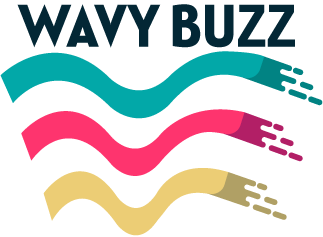According to several reports circulating online, the economy is thriving for those who are already wealthy — but for young people and low-wage Americans, it’s a different story. High-income earners and older Americans who own property have watched their 401(k) accounts and homes soar in value. While some may occasionally worry about AI replacing jobs, this group continues to spend freely. Per The Wall Street Journal, the top 10% of earners — those making $250,000 or more — accounted for nearly half of the nation’s consumer spending in the second fiscal quarter, splurging on everything from designer goods to European vacations. In a society where everyone feels pressure to keep up, how are those with less managing to cope? This is where Buy Now, Pay Later (BNPL) services step in, offering low-income Americans a way to budget for aspirational experiences. While convenient, the system carries significant downsides.
Klarna’s Rise and the BNPL Boom
Klarna, one of the most well-known BNPL providers, went public in early September. The IPO was a victory for the company’s leadership and shareholders, but Klarna’s success — and that of similar services — often comes at the expense of consumers who lack the financial discipline to manage debt responsibly. Unlike many credit cards, BNPL plans typically don’t charge interest and rarely impact credit scores. For Gen-Z, a generation already struggling with affordability, BNPL offers a way to finance desirable experiences — whether that means attending a Taylor Swift concert or ordering DoorDash and Uber Eats.
Debt itself is nothing new to Gen-Z. Their familiarity with it stems from the lingering effects of the 2008 financial crisis, the skyrocketing cost of higher education, and now, as adults, expenses such as medical bills, car payments, and mortgages. Debt also became normalized during the pandemic, when stimulus checks, generous unemployment benefits, and near-zero interest rates made borrowing attractive. Many Gen-Zers made major purchases during that time, from cars to homes, without fully grasping the long-term consequences. Fast forward to today, inflation and wage stagnation fuel persistent financial anxiety for a generation striving to match the lifestyle their parents recall as “the good old days.” In this context, any financial lifeline —BNPL included — appears attractive despite its pitfalls.
The Mobility Gap
From one perspective, BNPL is not inherently harmful. Debt, when managed well, can be a tool for building credit and financial stability. However, the question remains: can Gen-Z afford the impulse-driven consumer culture that BNPL encourages? The data suggests otherwise. According to the Bureau of Labor Statistics, unemployment among recent college graduates hovers between 5.3% and 5.8% — nearly double the national average. In industries like technology, some employers are even eliminating entry-level roles as AI proves more cost-efficient. Meanwhile, the average rent for a one-bedroom apartment in major U.S. cities has climbed 30% since 2020, with groceries and other necessities rising in tandem. For many young people, affordability has become a full-blown crisis. While BNPL may offer short-term relief, lasting financial security depends on savings and wealth-building over time.
The dilemma lies in asking a generation to be patient while America’s wealthiest enjoy unchecked prosperity. For Gen-Z, the problem is less about the economy itself and more about upward mobility. It is now nearly twice as hard for young people to get ahead compared to their parents’ generation. Adding to the frustration, Gen-Z has grown up watching the national debt balloon without clear accountability. Who is responsible for paying it down — and when—remains uncertain. Against this backdrop, urging Gen-Z to save and wait instead of using BNPL feels like a hollow argument.
The Real Risks of Instant Gratification
Still, BNPL offers psychological benefits. The ability to afford small luxuries — whether a trip to Sephora or tickets to the latest Drake concert — can provide a sense of empowerment and control. These experiences, however fleeting, contribute to confidence and self-identity, both of which are essential in building agency over one’s life. BNPL was designed to deliver exactly that: a quick financial fix when cash is tight. Yet relying on it in place of savings or steady income carries obvious risks.
This is not an endorsement of BNPL as a sustainable financial strategy. Rather, it highlights the economic conditions that make such services appealing for those without substantial means. Anyone considering BNPL should weigh its risks carefully and, ideally, consult a qualified financial advisor before relying on it as a budgeting tool.


This is an interesting take. What’s a healthy balance between trivial spending and accounting for emergencies with BNPL?